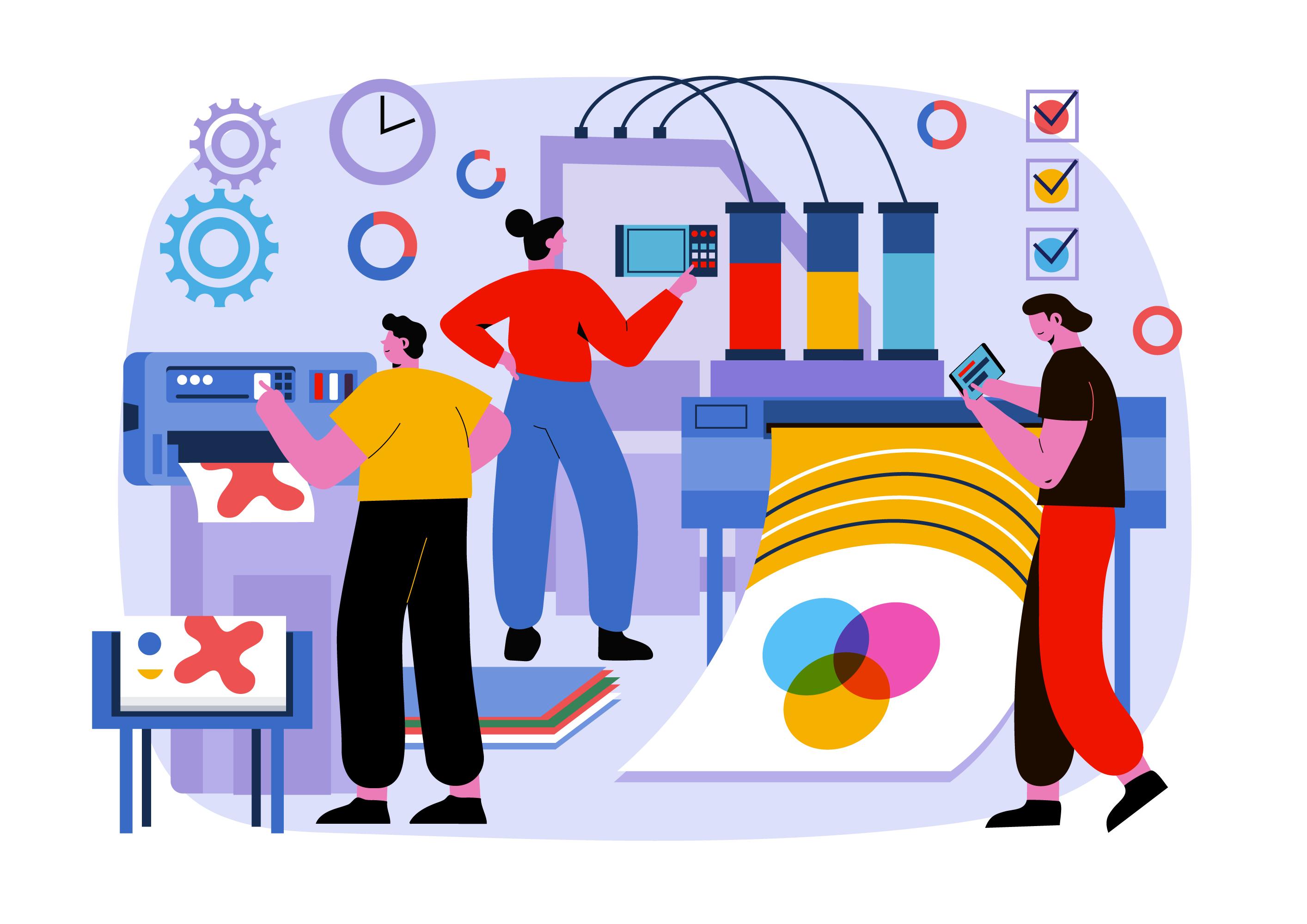.png)
Design That Draws: How to Create Customer-Centric Designs That Drive Revenue
07 Nov, 2024
In today's crowded market, it's not enough to just have a great product or service. Your design has to captivate, engage, and most importantly, convert. Whether you're creating a website, mobile app, or physical product, customer-centric design is essential to drive revenue. But what does it really mean to be “customer-centric,” and how can you ensure that your design works to increase your bottom line?
Here’s how to craft designs that not only resonate with your customers but also boost your revenue:
1. Know Your Audience (Really Know Them)
Before you can create a design that appeals to customers, you need to understand who your customers are. This isn't about simple demographics like age or gender. Dive deeper. What motivates them? What problems are they trying to solve? What are their habits, values, and expectations?
Conduct user research, surveys, and interviews. Pay attention to feedback from real users. The more data you collect, the more tailored your design will be. Tailored designs create a seamless experience, which in turn boosts customer satisfaction, loyalty, and sales.
Pro Tip: Create customer personas—fictional characters that represent segments of your audience. Use these personas to guide your design decisions, ensuring you're always thinking from the customer’s perspective.
2. Focus on Functionality First
No matter how beautiful a design is, if it doesn’t work well, it’s a fail. Customer-centric designs are intuitive, easy to navigate, and solve user problems efficiently. Great functionality drives conversions because it removes friction from the user experience.
Take e-commerce as an example: if customers can’t easily find products, navigate the checkout process, or load pages quickly, they'll abandon the site. This translates into lost revenue. Design must always prioritize usability and simplicity.
Actionable Tip: Test your design early and often. Use A/B testing to see how changes impact user behavior. The goal is to identify roadblocks in the user journey and address them before they cost you sales.
3. Emotionally Engage with Visual Storytelling
Great design isn’t just functional—it’s emotional. Visual storytelling can tap into customers' emotions, making them feel connected to your brand on a deeper level. Engaged customers are more likely to purchase, return, and recommend your product or service.
Colors, fonts, imagery, and layout can all contribute to this emotional connection. For example, a sleek, minimalist design may appeal to a professional audience, while vibrant colors and playful fonts might attract a younger, more casual demographic.
Design Strategy: Use consistent branding across all touchpoints to reinforce your message. This makes your design not just memorable but trustworthy—trust is a powerful driver of customer retention and revenue.
4. Prioritize Mobile-First Design
With mobile devices dominating online traffic, mobile-first design is no longer an option but a necessity. If your design isn’t optimized for mobile users, you're alienating a massive chunk of your potential audience. A mobile-friendly design ensures that customers can interact with your brand seamlessly on any device, increasing the chances they’ll stick around and make a purchase.
Mobile-first design simplifies navigation, makes buttons easy to tap, and reduces unnecessary content or clutter. A smooth mobile experience leads to higher engagement and conversion rates.
Quick Win: Ensure your design is responsive, meaning it automatically adjusts to fit any screen size. Google also prioritizes mobile-friendly websites, so optimizing for mobile can give your SEO a much-needed boost.
5. Create Clear Calls to Action (CTAs)
A call to action (CTA) is crucial in converting visitors into customers. Whether it’s a button prompting users to “Buy Now,” “Sign Up,” or “Learn More,” your CTA should be clear, compelling, and easily noticeable.
The design and placement of your CTA can make all the difference. Ensure buttons stand out with contrasting colors, and place them where they naturally fit within the user’s journey. Don’t overwhelm your audience with too many choices—guide them to take one clear action.
Best Practice: Pair your CTA with urgency—time-sensitive offers, limited stock, or exclusive deals—to motivate users to act immediately, boosting conversions and driving revenue.
6. Leverage Data and Analytics
Customer-centric design is not a one-and-done process. It's iterative and based on continuous feedback. Leverage analytics tools to see how users are interacting with your design. Are they dropping off at a particular page? Are certain CTAs not getting clicked? Use this data to refine and optimize your design.
Data-Driven Insight: Set up heat maps to see where users are clicking and how far they scroll on your pages. This visual data can give you insights into user behavior that might not be obvious from analytics numbers alone.
7. Delight Your Customers with Micro-Interactions
Sometimes, the small details make the biggest impact. Micro-interactions—those tiny animations or visual cues that occur when a user performs a task—can elevate the user experience and keep customers engaged.
For example, a subtle animation when hovering over a button or a congratulatory message after a purchase creates a delightful experience. These details show your customers that you care about their journey and enjoyment, leading to stronger emotional connections and more repeat customers.
Tip for Success: Micro-interactions should never overwhelm. They should be quick, meaningful, and seamlessly integrated into the overall design.
8. Optimize for Speed
Today’s customers expect fast, frictionless experiences. A slow-loading page or app is enough to cause users to bounce, costing you potential sales. Page speed is crucial, especially for mobile users. The faster your site loads, the more likely visitors are to stick around and complete their journey to purchase.
Tech Tip: Use tools like Google’s PageSpeed Insights to identify areas where you can improve load times. Compress images, minimize code, and enable caching to reduce lag.
9. Accessibility is Non-Negotiable
An inclusive design ensures that all users, regardless of ability, can interact with your brand. This is not just about doing the right thing—it’s also good business. Making your design accessible opens your business up to a wider audience, increases your brand reputation, and helps prevent legal issues related to non-compliance.
In Practice: Ensure your website meets Web Content Accessibility Guidelines (WCAG), such as using alt text for images, providing subtitles for videos, and ensuring your site is navigable via keyboard for those with disabilities.
Conclusion: Design with Revenue in Mind
Customer-centric design is all about creating experiences that prioritize your audience’s needs, wants, and emotions. When done right, it leads to higher engagement, stronger customer loyalty, and ultimately, increased revenue. By knowing your audience, focusing on functionality, engaging emotionally, and continuously optimizing through data, you can create designs that not only draw customers in but also keep them coming back for more.
So, design with intention—and watch your revenue grow. Ready to design with revenue in mind? Call Graphie.design today and create experiences that engage, retain, and drive growth for your business.
Recent Posts
-
 11 Apr, 2025
11 Apr, 2025
The Art of Functionality: When Beauty Meets Purpose -

-

-
 18 Mar, 2025
18 Mar, 2025
The Magic of Motion: Why Video Animation Wins -
.jpg) 12 Mar, 2025
12 Mar, 2025
The Magic of Print Marketing